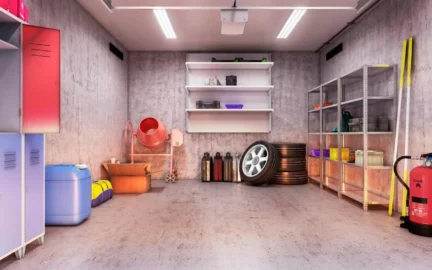Access Self Storage Blog
How to Prepare & Keep Artwork in Storage
Whether you’re an avid collector with a few pieces by famous artists or inherited something valuable from a kindly aunt that isn’t quite your taste, proper art storage is essential for preservation. If you’re moving and want to keep precious works safe, or just want to change the decor of your home without selling your art, read the tips below to keep your artwork in good condition while in storage.
Document Storage
Cleaning Prior to Storage
In preparation for storage, clean paintings very, very carefully. Use an artist’s paintbrush to gently dust the painting’s surface. The paintbrush art conservators recommend should feature soft, natural hair and be about 5cm wide. It’s also important that the brush is clean! If you don’t have access to such a brush, a clean piece of velvet will do. Never use a feather duster, moist cloth, or stiff brush. Do not use household cleaners, and skip the cleaning should your paintings feature a matte (unshiny) finish.
Brush the painting using slow, careful strokes all going the same direction. Be sure not to apply pressure to the piece. Clean in the other direction to complete the process.
If you’re concerned dusting may not be the best way to clean the painting or you otherwise have questions, consult an art conservator before storing.
Framed vs. Unframed Artwork
Use cardboard corners on the edges of framed paintings to maintain structural integrity. If working with unframed artwork, avoid rolling it up, as this will cause creases and subsequently make the paint crack. Gently wrap the piece in airtight, water-resistant packaging instead, such as glassine, in order to store properly.
Packing for Proper Storage
Wrap framed artwork in blankets, bubble wrap, or felt. Use tape to keep the padding attached and place the artwork in plastic bags. Use one plastic bag per piece and tie each bag shut. For unframed works, create protection “sandwiches.” For example, place unframed art between two pieces of slightly larger foam boards, cardboard pieces, or plywood. Use tape to keep the protection in place and use plastic bags for further shielding against water and air. Again, use one plastic bag per piece of artwork and be sure to tie the bags shut.
Storage Set-Up
Avoid laying paintings on top of one another whenever possible. If you must do so, use padding. Should you have to lay paintings against each other, use a painting rack. This is especially helpful if you have many paintings to store.
Concrete floors and walls are capable of absorbing moisture, so avoid placing artwork on or against such surfaces. Store your art at least a few inches off the floor to protect it from moisture and dust. For best results, use papers or acid-free boards as a liner before placing paintings on various flat surfaces.
Climate
Keep climate in mind when storing art. Avoid placing art in overly dry or overly damp storage units, and instead, opt for a climate-controlled storage facility. Sudden changes in temperature or humidity can cause paintings to tighten or stretch, so make certain the storage space maintains a consistent humidity and temperature. Most artwork benefits from storage spaces featuring a temperature of about 70% Fahrenheit and a humidity level of about 55%.
If you’re not using a professional storage facility with climate control, avoid placing artwork near windows or heating vents, as you don’t want them exposed to sunlight or heat.
Final Thoughts On Artwork Storage
Sufficient padding and climate control are cornerstones when it comes to preserving your valuable artwork for future enjoyment.
Professional Tips:
- Use both hands when carrying pieces to their temporary resting spots
- Hold pieces on their sides rather than tops.
- Carry one piece at a time.
Now you can rest easy knowing artwork is safe and secure in storage.
Other Articles for You

Navigating the Challenges of Rising Economic Costs
Groceries are more expensive than they used to be. Home prices are significantly higher than they were a few years ago. Automotive prices are up, insurance rates are up, and…
Read
Utilizing Self Storage While Downsizing the Family Home
Deciding to downsize the family home is a significant milestone in life. It can be exciting and daunting, as it involves not only letting go of cherished memories but also…
Read
A Guide to Getting Your Garage Organized
Homeowners who live in the suburbs have one thing in common: unorganized garages. No matter if you live in White Plains, NY or across the Hudson River in Congers, NY, you're bound to deal with a messy garage at some point in your life. A garage is more than a place in which to park your car; it's also a common household storage center. Access Self Storage has a few tips on how to keep your garage from looking like a disaster zone.
Read
Choose Branchburg, NJ, for Your Next Weekend Getaway
Your visit to this quaint northeastern township can offer something for everyone, with plenty of different attractions to experience. Visit the parks and spas to gear your trip toward relaxation…
Read